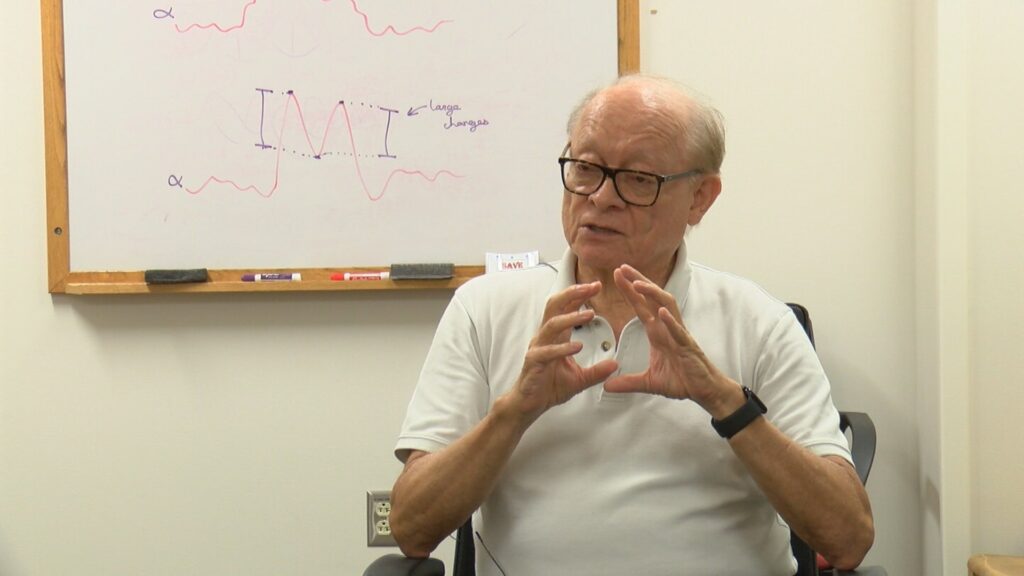BLOOMINGTON, Ind. (WISH) — Artificial intelligence is being used to diagnose autism and attention-deficit/hyperactivity disorder with a simple test at Indiana University.
The test the researchers created is as simple as monitoring arm movements to touch a computer screen.
To do the test, participants first have to put on a sensor that tracks the precise movements of the hand before it starts tapping dots on the screen that disappear and reappear every few seconds “This happens about 120 times,” said Chaundy Mckeever, an IU graduate student working on the research team.
Each touch produces spikey-looking data, Mckeever said, pointing at a screen-filled data point. “This would be the forward motion. This is when you’re making contact with the screen, and this is moving backward again.”
The researchers told I-Team 8 that everyone’s movements are random. Dr. Jorge Jose, the James H. Rudy distinguished professor of physics at Indiana University, said, “The real surprise is that the randomness in people that have autism, ADHD, or the co-morbid of the two things is totally different from people that are called neurotypical. The ones that don’t have this neurodevelopmental disorder.”
They’ve been working on this research since 2013, but using artificial intelligence has been a game changer for them. Jose said, “First, train the system to be able to test completely new participants, new subjects and can tell you with 86% accuracy. This is done in about 15 minutes.”
The system is a lot quicker than a psychiatrist or psychologist doing it. “It takes them from 10 to 12 hours to diagnose a new subject,” Jose said.
The test doesn’t work with every child. Mckeever said, “Some children are too young, or really low functioning. Young children with ADHD will not make it through the whole test. They just get bored out of their minds.”
Researchers tell I-Team 8 if a child can’t complete the test that can be a diagnosis in and of itself.
Now that their research is published in Nature, a peer reviewed scientific journal, they will be looking for more funding to expand the study with the ultimate goal of getting the test approved for widespread use.
“We think this can be done in elementary schools,” said Dr. Jose.
About The Author
You may also like
-
FBI surveillance records on MLK Jr. released despite family’s objections
-
Triple digit heat index values and swampy air mid to late week | Jul. 21, 2025
-
Police shooting in Fort Wayne kills man brandishing firearm
-
IMPD: Weekend reckless-driving partnership arrests 4, tows 7 vehicles
-
IMPD arrests 4 downtown for illegal alcohol sales, seizes drugs and guns

